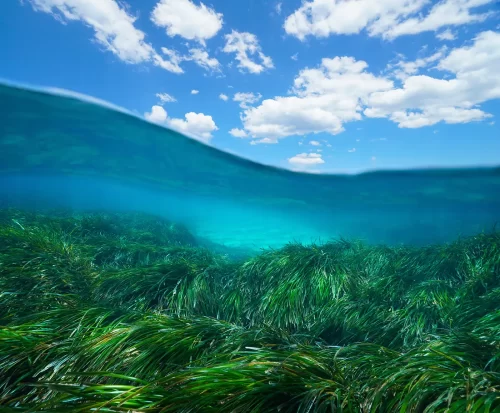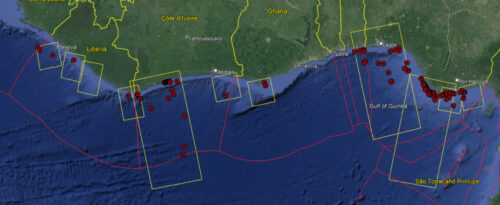A wave of ocean action shows opportunities for greater transparency toward marine governance

2022 dawned with even more uncertainty than most years. With COVID-19 lingering, it was unclear if the ocean conservation and fisheries management communities could hold the international meetings necessary to kick start work that had stalled during the first two years of the pandemic. And turbulence in the global economy threatened to push marine protection and climate solutions lower on policy agendas around the world.
But today, after a string of high-profile gatherings–and successes by Global Fishing Watch and other nongovernmental organizations–I am optimistic that the international community has revived its quest to restore our ocean to a thriving state that can provide us with food and livelihoods far into the future.
Transparency—the core of Global Fishing Watch’s mission—is at the center of this progress and our technology, tools and expertise are in high demand. Through our publicly available map visualizations, data and analytic tools, we seek to transform ocean governance so that, by 2030, anyone can pinpoint exactly where fishing is happening and detect vessels that are responsible for lawless fishing activity.
From its start, 2022 was dubbed “The Super Year of the Ocean” and it has largely forged ahead on that promise. In March, the United Nations Environment Assembly agreed to begin negotiating a binding global treaty to end plastic pollution, a distressing amount of which flows into the sea. At the U.N. Ocean Conference in Portugal in June, world leaders agreed to ramp up conservation efforts needed to save the marine environment, including through unprecedented investments and support to developing countries. Also in June, the World Trade Organization agreed to end some harmful fishing subsidies, a move that could substantially reduce overfishing worldwide. At Global Fishing Watch, we had our own version of a super year, capped by these achievements and milestones.
New government partnerships further increase fisheries transparency
Global Fishing Watch was founded on the principle that transparency is the key to sound and sustainable ocean governance. In 2022 we made significant strides by signing new agreements with the Republic of Marshall Islands, Benin, Norway and Papua New Guinea to share their vessel tracking data on our public map.

In April, at the Our Ocean Conference in Palau, the Marine Resources Authority of the Marshall Islands became our first Pacific Island partner, committing to bring more than 600 vessels into our map—a combination of all boats flagged to the republic and all foreign ships fishing in its waters—through the integration of the government’s vessel monitoring system (VMS) data. These vessels primarily target tropical tuna species in the Western and Central Pacific Ocean, which is the world’s most valuable tuna fishery, accounting for around half of the world’s tuna catch.
In May, we signed a memorandum of understanding (MOU) with Benin—our first African partner—which agreed to share the data from their VMS, once it’s fully implemented, and requested our support in building out their vessel monitoring, control and surveillance capacity. As we enter 2023, we’re confident that the Benin MOU will lead to even greater transparency of fishing activity in African waters, particularly because the Sub-regional Fisheries Commission and Fisheries Commission of West and Central Africa have already signed letters of intent with us, declaring their shared vision for greater transparency across fisheries and improved regional collaboration. Senegal, Gambia, Gabon, Ghana and Cameroon are working towards transparency partnerships.

Building on these successes, at the U.N. Ocean Conference in Portugal in June, we signed an MOU with Norway, the first European country to agree to share its VMS data with us. This opens up new opportunities to work with EU member states and the European Commission.
And in October, our engagement with Papua New Guinea’s Fishing Industry Association culminated with the National Fisheries Authority agreeing to share VMS data for all vessels on the Global Fishing Watch map. It highlights the Papua New Guinea industry’s appreciation for the role transparency plays in building trust with seafood buyers and opens up consideration for other industry actors to do the same. We’ve seen similar successes on the other side of the world where, in Ecuador, we are now working with TunaCons, a fishing collaborative, to apply our monitoring data to help drive sustainable fishing.
Furthering our transparency efforts, and focusing on biodiversity protection, Palau entered a partnership with Global Fishing Watch to use Marine Manager, a technology portal founded by Dona Bertarelli to support the design, management and monitoring of protected areas. Palau will use the tool to enhance monitoring of its territorial waters—80 percent of which are fully protected as a marine sanctuary–and inform its national marine spatial plan.
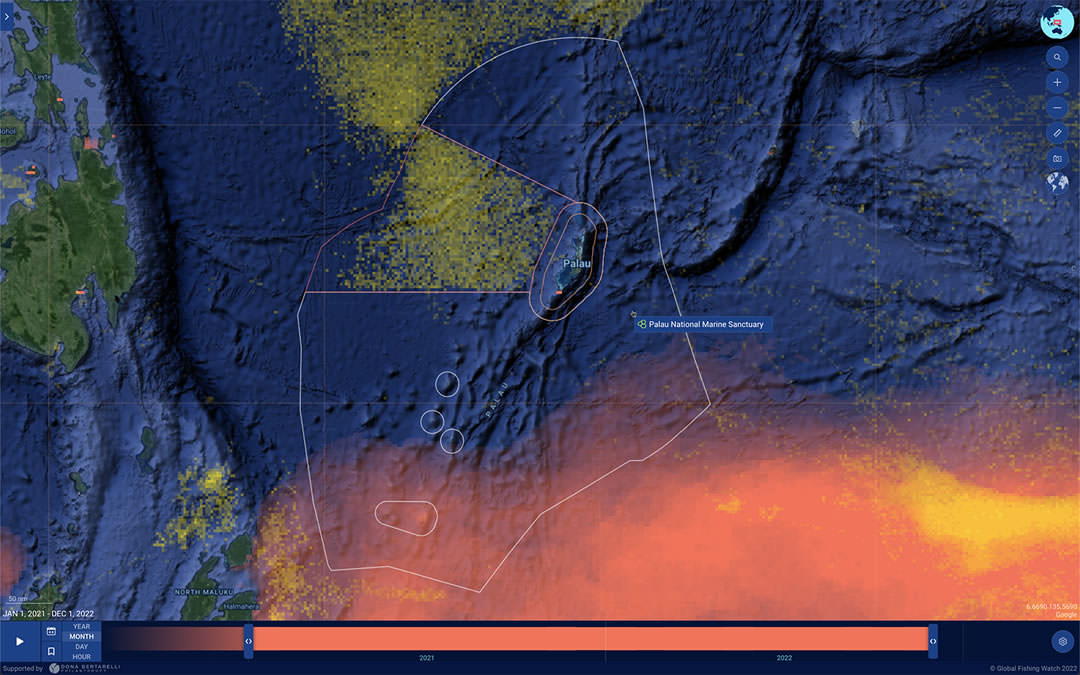
Political will grows to use technology for ocean governance
IUU fishing remains a major issue worldwide, accounting for up to $23 billion worth of seafood—and up to one in five wild-caught fish taken from the ocean—annually.
In 2022 the global community made strides to tackle IUU fishing, starting with the launch by Canada, U.K. and U.S. of the IUU Fishing Action Alliance (IUU-AA) at the U.N. Ocean Conference in June. Quickly joined by Iceland, Norway and several NGOs, it is a growing collection of governments and civil society that have signed a pledge to fight IUU fishing by implementing international agreements; improving monitoring, control and surveillance; and increasing transparency.
In September, we sent our first-ever delegation of official observers to the 35th Session of the U.N. Committee on Fisheries (COFI 35) in Rome. We had immediate success, supporting a proposal by Norway for an unprecedented global agreement for tracking vessels. The proposal includes a requirement for both the use of tracking systems on fishing vessels and sharing of positional data between relevant governments—this results in determining where a vessel has been operating and what it is authorized to do. The committee expressed strong support for the proposal, and the U.N. Food and Agriculture Organization committed to convene a technical workshop to consider the scope of such an agreement.
In another positive development from COFI 35, the committee endorsed a set of voluntary guidelines to better ensure that transshipment—the at-sea transfer of catch between vessels—is done legally and with full transparency. Many major fishing nations and seafood companies engage in legal transshipment, but opaque rules around the practice, coupled with the fact that it often occurs hundreds of miles out to sea, leave a lot of room for nefarious behavior, including the transfer of illegally caught fish.
COFI endorsed the new guidelines, which resulted from a comprehensive, two-year consultation with experts and multiple stakeholders. The committee also encouraged all Members and regional associated bodies to adopt, implement and improve transshipment oversight and management practices. These guidelines will support improved fisheries management and help prevent IUU-caught fish from entering the supply chain.
Strength in numbers: Partnerships yield greater success
Since our founding, Global Fishing Watch has sought out a wide range of alliances to advance our mission and in 2022 we continued to do so.
In May, in partnership with the International Monitoring, Control and Surveillance Network and TM-Tracking, we launched the Joint Analytical Cell (JAC), a collaborative initiative that aims to provide authorities, particularly those in developing States, with fisheries intelligence, analysis and capacity development to combat illegal fishing. The JAC will serve as a hub through which any country can access the data, intelligence and resources—including training—of others to help strengthen port controls, oversee transshipment activity, and monitor their waters.
The JAC will also make its analyses available to international organizations to close the loopholes that many illegal fishing operators exploit. Since its inception, two more partners have joined the initiative: Skylight, a free technology platform that uses maritime monitoring and machine learning to surface suspicious activity and C4ADS, a nonprofit organization that provides data-driven analysis and evidence-based reporting to bolster global security. Together, this collective can, through closer coordination, use philanthropic support and their shared data more effectively to bring greater change at better value to donors and the partner countries.
In November, the Med Sea Alliance—a coalition of nonprofit organizations, including Global Fishing Watch—launched the Med Atlas of Bottom Trawling, which for the first time maps areas permanently closed to bottom trawling across the Mediterranean Sea and investigates illegal trawling in these areas. The atlas uses AIS data from our map to identify apparent fishing. Bottom trawling can cause extreme damage to seafloor ecosystems, including coral colonies and thermal vents. The work confirmed 80 infringements and identified 35 closed areas with incidents of possible bottom trawling.
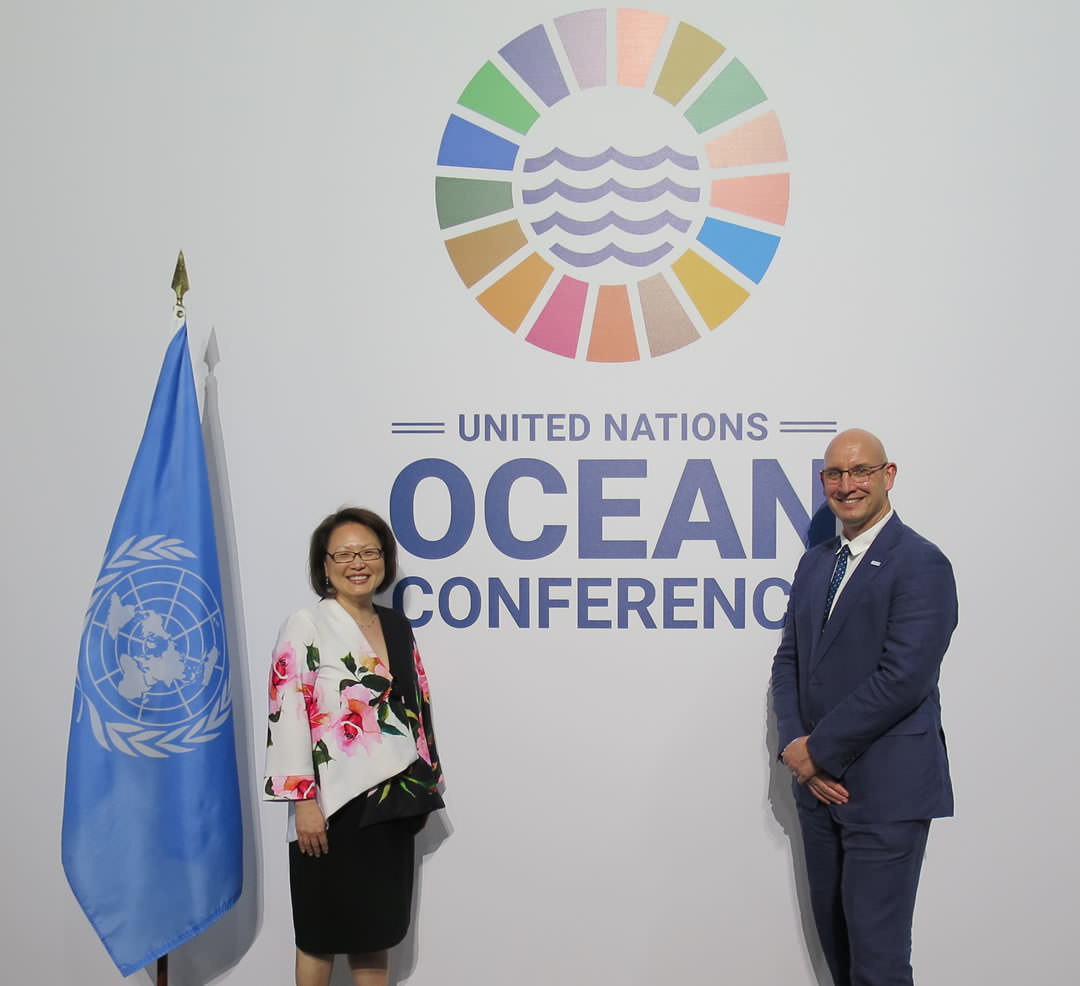
In a move to leverage both cutting-edge technology and historic data, we signed a partnership with MDA, Inc., a Canadian-based technology company which serves the space industry with geointelligence and satellite data. The agreement provides Global Fishing Watch access to the company’s RADARSAT-2 satellite radar archive, which includes a 14-year historical record of the Earth and includes more than 970,000 images, including over 26 billion square kilometers of oceanic synthetic aperture radar that creates images that can “see through” clouds and operate day and night. We plan to use the archive to map IUU fishing patterns that in turn will be used by international policymakers, conservationists and researchers.
The past year also brought the launch of the Global Fisheries Transparency Coalition, a community of ocean advocates seeking to increase transparency of maritime activity worldwide. As a member of the coalition’s steering committee, Global Fishing Watch will work alongside the growing coalition of conservation groups to establish a global charter for fisheries transparency that provides a set of core principles that is supported by civil society actors across the globe.
And continuing this strong theme, in November, I was also pleased to make a trip to the U.S. Coast Guard headquarters in Washington, D.C. to sign an MOU to promote transparency across global fisheries and increase data sharing in the fight against illegal fishing.The two parties will collaborate on technology, data exchange, and operational analysis to produce actionable insights and assist the intelligence community in targeting their resources to address this global maritime security threat.
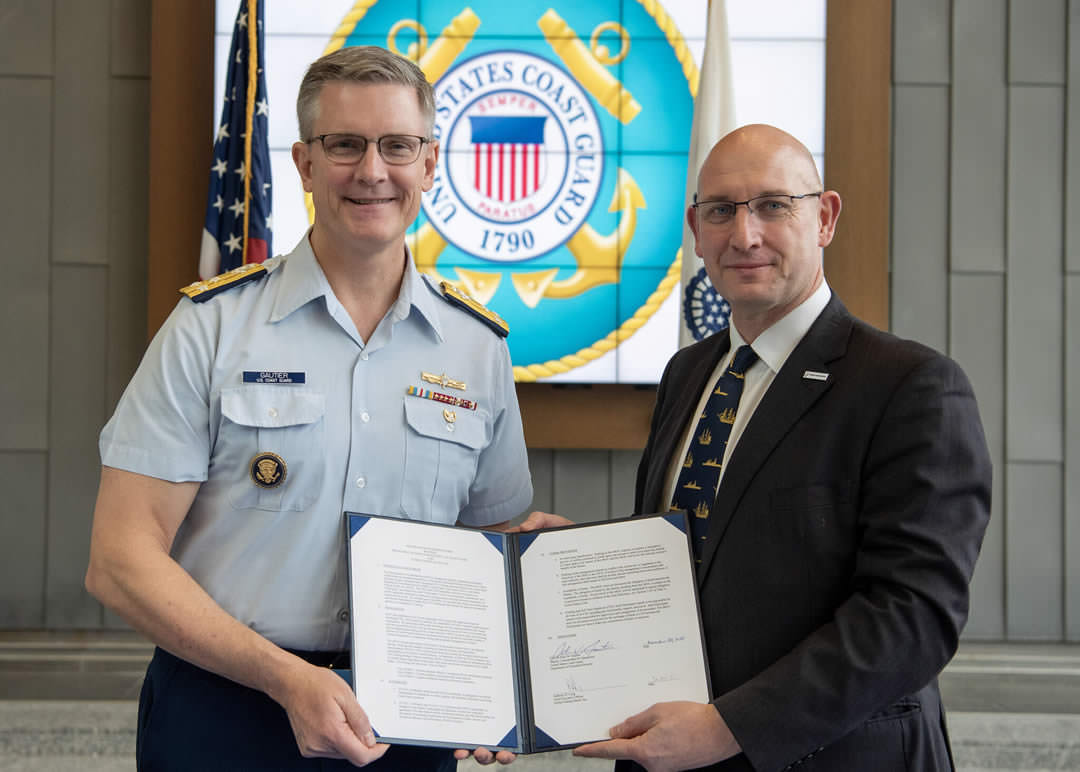
Working for fair data access, and science to support sustainable policies
We also ramped up our efforts in 2022 to give even more people access to our data, and to promote sound science that policymakers can use to improve ocean governance. This included:
- Making our data and technology more accessible through our API portal, which enables automatic connection of our data to other systems so users can integrate our datasets, code and models to power their own platforms.
- Publishing five new research papers, including a landmark paper in Science Advances that analyzed where vessels intentionally hide their position by disabling their AIS transponders, helping to pinpoint hotspots of where these events occur.
- Launching a new layer on our flagship map that merges nighttime images with GPS datasets so we could “see in the dark” and observe vessels that aren’t broadcasting their positions, and the first-ever global map of previously undetected dark fleets.
- Launching the next generation of the marine manager portal, with new features that include greater accessibility and environmental datasets from Google Earth Engine. This leading-edge portal enables anyone to explore biological, oceanographic and human activity data for a wide variety of ocean stewardship purposes. In addition to the Palau work noted above, Marine Manager has piqued the interest of new partners, resulting in collaborations with Pew Bertarelli Ocean Legacy and the Waitt Foundation. The innovative technology portal now assists in managing MPAs across nine areas covering over 10 million square kilometers of ocean.
- Testing a series of prototype products of our Vessel Viewer tool to advance understanding of IUU fishing risk to support risk assessments in port inspections, fisheries enforcement, insurance and supply chains. This included pilot testing, which was done in collaboration with Ocean Risk and Resilience Action Alliance, or ORRAA, across 32 insurance companies using an insurance-focused prototype of Vessel Viewer, as well as a pilot of the tool with our partner TM-Tracking and four African countries to support risk-based vessel inspections under the Agreement on Port State Measures.
A fruitful year indeed, but we won’t be resting on these successes. Climate change is accelerating, marine biodiversity faces increasing pressure, illegal fishers are still exploiting the system and global social and economic conditions continue to drive all manner of alarming activity at sea. So Global Fishing Watch will press on, straight into whatever storm clouds arise on our horizon, to shed an ever-brighter light on human activity on our ocean, help strengthen fisheries and biodiversity and ensure the ocean can provide for us for centuries to come.
Tony Long is the chief executive officer of Global Fishing Watch
